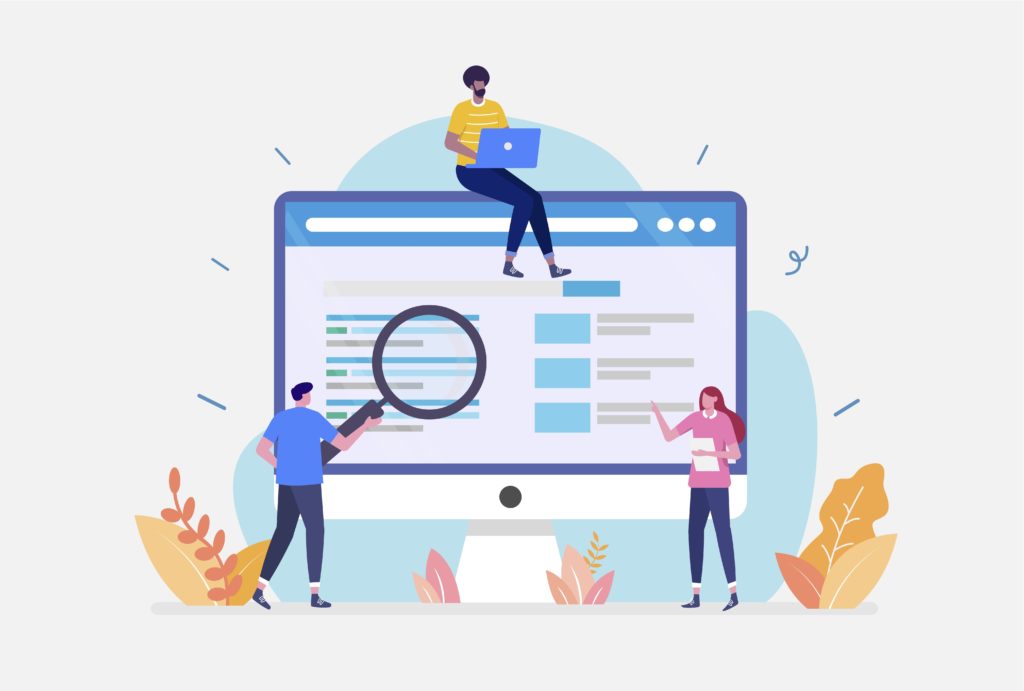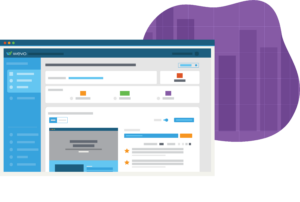When leveraging user research to guide their work, digital marketing, product, and design teams have typically relied on methods that provide either quantitative or qualitative data. But neither type of data on its own tells the whole story: the most accurate, in-depth, and actionable insights are only accessible by combining qual and quant, or as we like to call it at WEVO, “qualt.”
Let’s start with a look at quantitative data. Quantitative data is information that can be measured numerically, or “quantified.” In other words, it is data that can be expressed in numbers. This is usually done through A/B testing or large N surveys, which 58% of marketers say they use. And why not? It’s comforting to be able to collect hard data to guide a more effective customer experience. But here’s the catch: A/B testing doesn’t tell you what to test.
Planning an A/B test is essentially making an educated guess. You can test how Option A performs against Option B, but an A/B test can’t tell you what Option A should be, and it can’t tell you what Option B should be. You’re just testing variations that, quite frankly, could both have elements that don’t resonate with your customers — you could be pitting two weak digital experiences against each other. For example, you can’t tell that half of your visitors are offended by an image you thought was harmless, or that the key benefit you are basing your pitch around is actually not that important to your customer base. You’ll know which of your options came out on top, but you won’t necessarily know if you could be creating an even stronger CX with an Option C.
This need for more feedback often leads to qualitative testing, an area that organizations are sometimes wary of investing in. Qualitative data is descriptive information that cannot be expressed via numbers, collected by methods such as survey or user videos. While it can deliver valuable, verbatim feedback on audience likes and dislikes, it’s difficult to draw the statistically significant results that quantitative data provides.
As you can imagine – and probably have experienced – this type of data is also more difficult to test for, measure and interpret because it’s messy: it’s not standardized and, therefore, can’t reliably be turned into a meaningful, actionable conclusion.
For example:
- Focus Groups & 1:1 Usability Studies – Focus groups or in-depth usability studies allow marketers to get a very deep look at how a select number of users are experiencing a landing page or website. This method can be very costly and, because of the small sample size, the test’s statistical confidence is low.
- User Surveys – Surveys allow businesses to achieve statistically significant results at required confidence levels, but surveys live or die by the quality of the questions being asked and the audience that answers them. Additionally, because the survey format is more rational than emotional, it will favor what users think they should do, versus what they would actually do.
- Website Feedback – Running programs that automatically collect website feedback is typically a low cost option, but it can take a long time to reach statistically significant results. And, testing on live traffic means exposing flaws that may be costing you conversion opportunities.
All of these traditional methods of user research fall short of being able to provide a complete picture of what the customer expectations are, where the digital experience does and doesn’t meet those expectations, and why.
Finding the Actionable Insights
Imagine the opportunities that product, design, and marketing teams could pursue with a solution that offers insights provided by qualitative methods, the analysis and validation provided by quantitative or A/B testing, and the statistical significance to create measurable results. Add to this combination an expert analyst who can turn these insights into actionable recommendations, and these teams are empowered to optimize their digital customer experiences — all before going live.
Enter WEVO, a solution that uses both human input and AI technology to provide fast, accurate insights at scale. WEVO leverages the core digital drivers that yield repeatable patterns of behavior: Experience, Clarity, Appeal, Relevance, and Credibility. By understanding how visitors score digital experiences in these categories across and benchmarking against industry standards, WEVO can predict at least part of a pages’ success based on algorithm alone. WEVO also uses a unique method of emotional and rational elicitation and is able to score and benchmark using that proprietary methodology and data set. This makes WEVO results highly predictive, enabling organizations to optimize first and launch new pages with confidence.
See “Qualt” in Action
One WEVO client had a landing page that closely followed what they believed to be best practices. The copy heavily featured the primary benefits of the system, touted the strongest features, and spoke to key requirements like “reliability, implementation, and support.”
After undergoing the WEVO test, however, it was discovered that the target consumers – IT directors – were primarily concerned with the human issues of bringing a new system into their organizations. Yes, the features and benefits mattered, but what REALLY mattered was, “How difficult is it going to be for our users to use this system, and how will that impact the experience our customers have with both our people and our system?”
By combining the quantitative data that revealed that the current messaging was not falling short with a statistically significant portion of the test users with the qualitative “why” they felt that way, The client was able to alter their message to better meet audience expectations. The result was a significantly higher conversion rate for that product.
Contact us to learn how WEVO can help you leverage the power of qualt to optimize your digital experiences.



